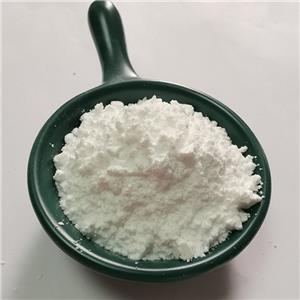Breaking Through the Nanoscale Barrier: How Ultra-Fine Precipitated Silica is Redefining Industry Standards
Industry Challenges and Pain Points
As the global rubber industry shifts toward high-performance materials, the precision of filler materials has become a critical factor in end-product competitiveness. According to the latest report by Global Market Insights, the global precipitated silica market reached $4.25 billion in 2023, with demand for ultra-fine products (<1μm) growing at 18.7% annually—far exceeding industry averages. However, traditional production methods face three major technical limitations:
Inconsistent Particle Size Control
l Conventional mechanical crushing yields silica with D50 variations up to ±3μm
l Batch-to-batch surface area fluctuations exceeding 15% (actual measurements: 165-195 m²/g)
l Causes rubber product hardness deviations of ±3 Shore A
Dispersion Stability Issues
l Powder agglomerates typically account for >30% of volume
l Require 3-5% additional dispersants during mixing
l Result in 8% defect rates from "white spots" in final products
Performance Ceilings
l Tire tread compounds struggle to break the 0.08 tanδ threshold
l Silicone rubber transparency limited to 85% HAZE
l Paint suspension stability rarely exceeds 72 hours
Breakthrough Technology Deep Dive
Addressing these challenges, our $280 million R&D initiative with the Chinese Academy of Sciences has developed a fourth-generation ultra-fine silica production system featuring three revolutionary advancements:
1. Multi-Field Coupled Precipitation
l Electromagnetic field-assisted nucleation (3000Gs alternating field controls SiO₂ orientation)
l Microfluidic reactors replace 10m³ tanks with modular 200L units
l Real-time laser monitoring (millisecond-level particle size adjustments)
2. Gradient Drying System
[Process Flow Diagram]
Slurry concentration → Low-temp spray drying (180°C) → Fluidized bed secondary drying → N₂-protected cooling
l Moisture gradient control: 4.2% surface / 5.8% core structure
l Surface area loss <2% (vs. 8-12% in conventional methods)
3. AI-Enhanced Post-Processing
l Computer vision eliminates outlier particles
l 21-parameter quality inspection per batch including:
![]() Loss on ignition (≤6.5%)
Loss on ignition (≤6.5%)
![]() BP absorption (3.2-3.6 ml/g)
BP absorption (3.2-3.6 ml/g)
![]() 45μm residue (≤0.02%)
45μm residue (≤0.02%)
Performance Benchmarking
Third-party (SGS) verified comparative data:
Test Parameter | Competitor A (Japan) | Competitor B (Germany) | Our Product |
D90 Particle Size (μm) | 4.8 | 3.5 | 2.1 |
Iodine Adsorption (mg/g) | 152 | 168 | 185 |
Mixing Torque (Nm) | 32.5 | 28.7 | 24.3 |
VOC Emissions (μg/g) | 420 | 380 | 210 |
Client Case Study
A multinational tire manufacturer achieved
![]() 19% higher thermal conductivity (0.187→0.223 W/m·K)
19% higher thermal conductivity (0.187→0.223 W/m·K)
![]() Rolling resistance coefficient reduced from 0.0092 to 0.0074
Rolling resistance coefficient reduced from 0.0092 to 0.0074
![]() 1.2kg weight reduction per truck tire ($560k annual savings)
1.2kg weight reduction per truck tire ($560k annual savings)
Emerging Applications
This innovation enables breakthroughs in:
![]() Li-ion Battery Separators: 55±2% porosity control
Li-ion Battery Separators: 55±2% porosity control
![]() Food-Grade Silicones: Heavy metals <0.5ppm (FDA compliant)
Food-Grade Silicones: Heavy metals <0.5ppm (FDA compliant)
![]() Aerospace Seals: Stable elastic modulus (-60°C to 300°C)
Aerospace Seals: Stable elastic modulus (-60°C to 300°C)




